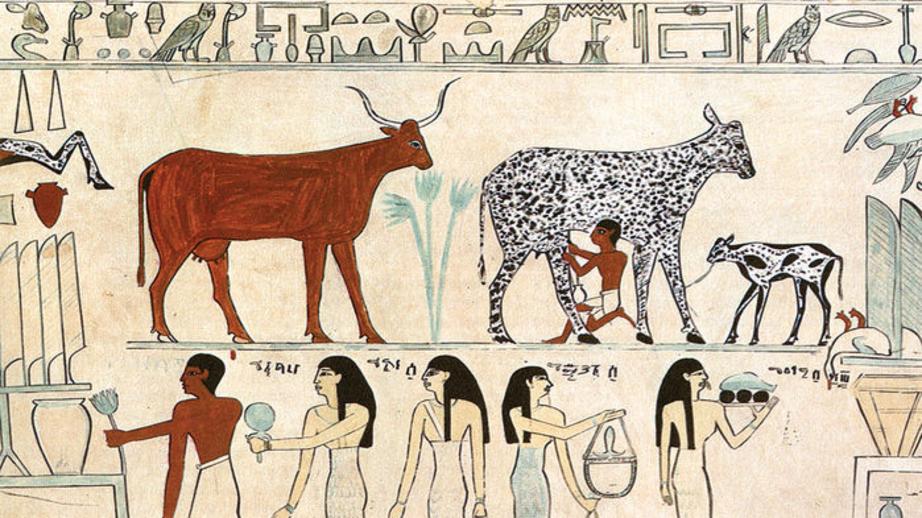How taming cows and horses sparked inequality across the ancient world
Today, 2% of the world’s people own more than half its wealth. This rise of the superrich has economists, politicians, and citizens alike wondering how much inequality societies can—or should—accept. But economic inequality has deep roots. A study published this week in Nature concludes that its ancient hotbed was the Old World: Societies there tended to be less equal than those in the New World, likely because of the use of draft animals.
“Nobody has tried to do this before—take this very broad view and see if there are significant differences between the Old World and the New World,” says historian Walter Scheidel of Stanford University in Palo Alto, California, who calls the results “quite striking.” Just as striking: Every ancient society studied was much more equal than the United States is today.
Detailed economic records don’t exist for most premodern cultures, so the study’s authors needed a way not only to measure wealth at archaeological sites, but to compare it across societies. “To do a true comparative analysis, you have to get everything into the same framework,” says archaeologist Michael Smith of Arizona State University in Tempe, who led the study with Tim Kohler of Washington State University in Pullman. The researchers settled on house size, which many archaeologists already measure.
The team worked with archaeologists around the world to collect data from 62 sites in North America and Eurasia dating from before 8000 B.C.E. to about 1750 C.E. (They also included one modern hunter-gatherer group, the !Kung San in Africa.) From the distribution of house sizes, they calculated each site’s Gini coefficient, a standard measure of inequality. Gini coefficients range from zero, indicating that each person has exactly the same amount of wealth, to one, representing a society in which a single person has all the wealth.
The researchers found that inequality tended to gradually increase as societies transitioned from hunting and gathering to farming, supporting long-held hypotheses about how agriculture intensified social hierarchies. About 2500 years after the first appearance of domesticated plants in each region, average inequality in both the Old World and the New World hovered around a Gini coefficient of about 0.35. This figure stayed more or less steady in North America and Mesoamerica. But in the Middle East, China, Europe, and Egypt, inequality kept climbing over time, topping out at an average Gini coefficient of about 0.6, roughly 6000 years after the start of agriculture at Pompeii in ancient Rome and Kahun in ancient Egypt.
Those numbers are far below the wealth inequality seen today in the United States and China, which have Gini coefficients of 0.8 and 0.73, respectively, according to studies by Chinese researchers and a 2008 United Nations study.
The authors propose that domestic animals may explain the difference between the New World and the Old World: Whereas North American and Mesoamerican societies depended on human labor, Old World societies had oxen and cattle to plow fields and horses to carry goods and people. Livestock were an investment in future enterprises, allowing people to cultivate more land and stockpile food surpluses, as well as build trade caravans and armies to control huge territories. “Think about how people get rich in modern societies. They find clever ways to tie their current wealth into their future income,” Kohler says. Because land and livestock could be passed to future generations, certain families got even richer over time.
Calculating Gini coefficients for ancient sites ought to be standard practice, says archaeologist Brian Hayden of Simon Fraser University in Burnaby, Canada, but he notes that draft animals aren’t the only way to turn natural resources into heritable wealth. At Keatley Creek in British Columbia in Canada, he excavated houses up to 20 meters in diameter dating to between 2500 and 1100 years ago, and calculated a Gini coefficient of 0.38. He thinks that some families monopolized productive salmon fishing sites for generations, making this hunting and gathering society much less equal than others in the new data set. “The inheritance of fishing sites is exactly like the inheritance of land or cattle or anything else,” Hayden says. He’d like to see data from Andean South America, where empires from the Moche to the Inca controlled huge territories and also domesticated llamas and alpacas.
Economist Peter Lindert of the University of California, Davis, calls the choice of house size as a wealth proxy “wise,” but archaeologist Melissa Vogel of Clemson University in South Carolina cautions that factors such as the quality of construction materials could complicate the analyses. “It’s great to try to do these larger comparisons,” she says. “But there are some real limitations.”
David Carballo, an archaeologist at Boston University who studies the egalitarian society of Teotihuacan in central Mexico—Gini coefficient of 0.12—thinks such simplifications are a necessary price to pay for such a long and diverse record of inequality. Kohler and Smith hope other archaeologists will calculate Gini coefficients for their sites and add to the research. “We’re just scratching the surface,” Kohler says.

